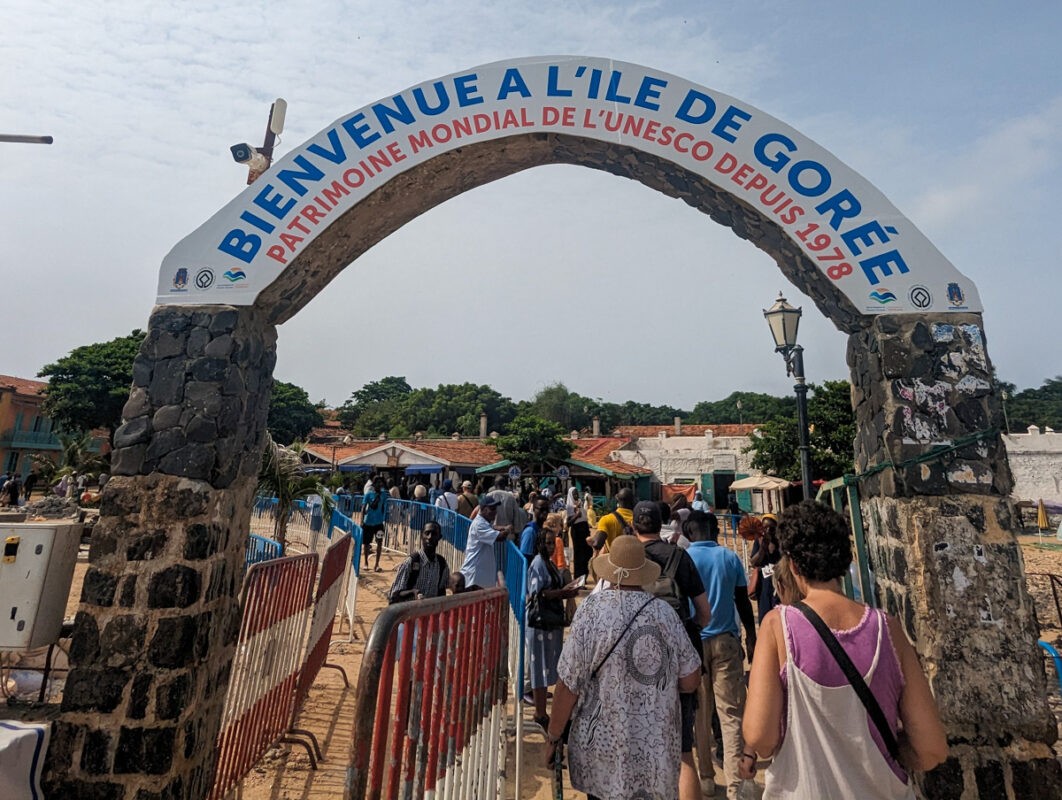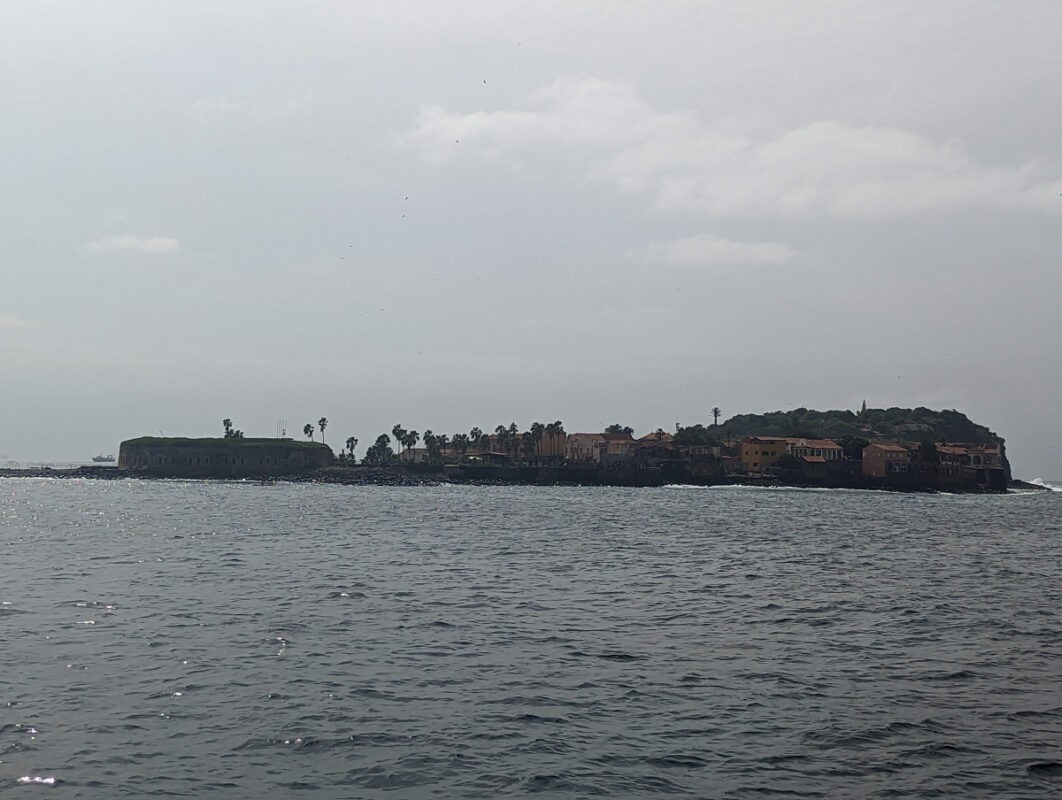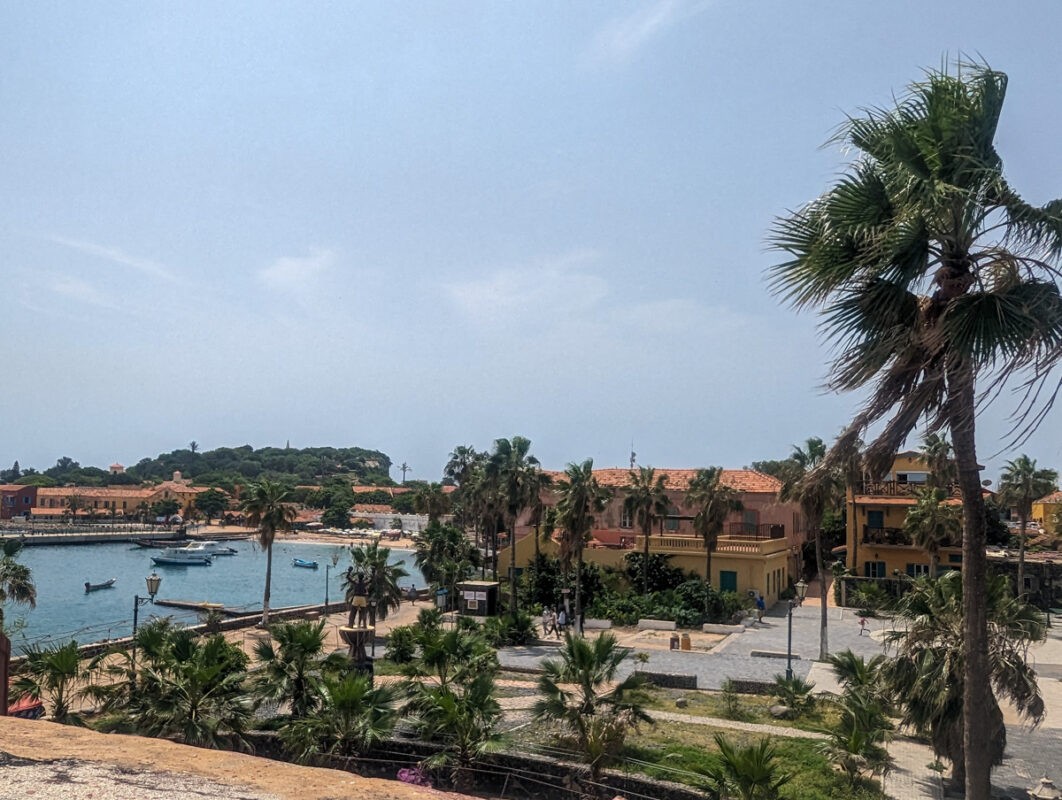A rocky landmass measuring just 900 by 350 metres in area, Gorée Island sits just 3km from Senegal’s capital city.
Nowadays a tranquil place, this UNESCO World Heritage Site has a tragic history; it was once the holding place for slaves from the 15th – 19th century.
The history of Gorée Island is despicable, but it’s an extremely important place to visit, to come to terms with how horrific humanity can be.
I visited Gorée Island on my trip to Senegal – here are the notes I made about what to do there and how to visit.
About Gorée Island

The now UNESCO-rated Gorée Island is nowadays a slice of serenity, around a 20-minute boat ride from the coast of Dakar.
While it’s nowadays peaceful and reflective, its history is among the most sombre and grave in the world.
Gorée Island was first inhabited by the Lebou people, an ethnic group from the Senegal region. The Portuguese were the first Europeans to arrive on the island in 1444. They used the island to keep their boats docked.
In 1536 they built one of the first slave houses.
Following the Portuguese, the island saw a succession of European colonial powers including the Dutch, English, and French, each using the island for various purposes, including as a trading post. It was in an advantageous position off the coast of Africa, with all European powers wanting to be in possession – it was ultimately taken over by the French in 1763.
During the years of the Trans Atlantic slave trade, from the 15th to 19th century, Gorée Island was used to hold captive slaves before they were transported to North America.
West African men, women and children would usually be caught inside and sent to Gorée Island, where they would be imprisoned until a boat arrived. This chilling history is echoed in the House of Slaves; there used to be multiple houses around the island, but this is the only one that remains a relic of its past.
The island stopped being used to hold slaves in around 1848 when France abolished its slave trade.
In 1978, Gorée Island was designated a UNESCO World Heritage Site, recognized for its role in history and as a symbol for remembrance and education about the impacts of slavery.
How to visit Gorée Island

Tour
Visiting Gorée Island on a tour is one of the best ways to really engage in its history.
With a local guide, you’ll be taken straight to the House of Slaves and will be able to fully learn about its history.
On this tour, your guide will pick you up in Dakar or Saly, taking you to the harbour where you’ll sail across to the island. Once you’ve visited the House of Slaves, you’ll see other spots on the island.
Independently
You can certainly visit Gorée Island independently!
To do so, you’ll need to take a taxi (we used Yango in Dakar which worked like Uber, but paid with cash) to the harbour and purchase a ticket for the boat (5200 CFA for non-residents). Here’s a timetable for the boats (taken October 2023).

Once you’re on the island, you can explore at your own leisure. You may be approached on the boat by tour guides offering to show you around – this will be cheaper than doing an organised tour, but be sure to confirm the price first!
Things to see on Gorée Island

From learning the history at the House of Slaves to seeing the island’s beaches, here are the best things to see on the island.
House of Slaves

The House of Slaves is a poignant reminder of the island’s tragic past in the transatlantic slave trade.
Built in the late 18th century, it is the one remaining house where slaves were imprisoned in.
It’s been preserved to showcase the horrors of the slave trade to tourists, with some rooms also containing educational exhibits.
The Door of No Return, a passageway leading to the sea, is particularly emotive.
This was where people would take their last step off of African soil before joining the boats to take them to the Americas. Virtually nobody ever returned back to Africa, so it was the last point where enslaved people would step off the continent.
Mémorial Gorée-Almadies

The Mémorial Gorée-Almadies is dedicated to the African diaspora and is as a place of remembrance and reflection, a tribute to the resilience of African culture and people.
It’s a poignant site where you can learn about the history and impact of the slave trade.
See the beaches
Being a tropical island, there are a couple of excellent beaches on Gorée.
Translated as “Lovers’ Beach,” Plage Des Amoureux is ideal for a peaceful stroll or a relaxing day by the sea.
Another charming beach on the island, Petite Plage De Gorée is smaller in size and boasts views over the Atlantic Ocean.
Take a dip or enjoy food on the sands.
The streets of the island

The narrow, cobbled lanes of Gorée Island are lined with colorful colonial-era buildings, each coloured in a different shade of pastel.
Walking through these streets, you’ll encounter vibrant markets and local art shops and galleries.
We went into one of the galleries where we learned about traditional sand painting and bought an artwork to take home with us.
Is Gorée Island worth visiting?

Yes, Gorée Island’s absolutely worth visiting.
The slave trade was the worst of humanity, but if’s very important to learn about. Gorée Island is the best place to learn about it.
The history that you’ll learn is shocking, tragic and heart-wrenching – but I firmly believe that it’s important to come to these places, to come to terms with what humanity has done in the past – by collectively learning, I hope that we can collectively avoid repeating the same mistakes.
Gorée Island’s UNESCO Heritage Listed for that reason, and it’s well worth making the trip over from Dakar to see it – I’d argue that it’s the most important thing to experience in all of Senegal.
Gorée Island is without a doubt one of the best – if not the best – things to do in Dakar. It offers a historical education like no other, which contrasts with its modern serenity.

